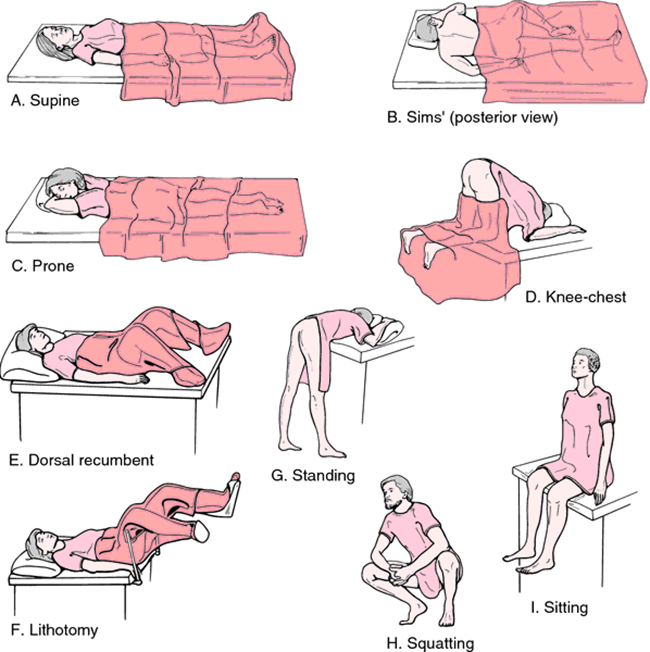A nurse is preparing to examine the breasts of a client. In what position should the nurse place the client?
lithotomy
sims
supine
prone
The Correct Answer is C
A. Lithotomy: The lithotomy position is primarily used for gynecological exams and procedures, where the client is lying on their back with legs elevated and supported. It is not appropriate for breast examination.
B. Sims: The Sims position, where the client is lying on their side with one knee bent, is typically used for rectal exams and certain types of enemas. It is not suitable for breast examination.
C. Supine: The supine position, where the client lies flat on their back, is the most appropriate for breast examination. This position allows for better palpation and inspection of the breasts and facilitates a thorough examination.
D. Prone: The prone position involves lying face down. This position does not provide access to the breasts and is not used for breast examination.

Nursing Test Bank
Naxlex Comprehensive Predictor Exams
Related Questions
Correct Answer is B
Explanation
A. "I will make exercise a part of my daily activities." This is a positive and correct statement. Regular exercise is an important component of a healthy lifestyle and should be encouraged.
B. "I should eat a diet high in fats but low in fiber." This statement is incorrect and indicates a misunderstanding of healthy dietary guidelines. A diet high in fats and low in fiber is not recommended for maintaining health and can lead to various health issues like obesity, heart disease, and digestive problems.
C. "I only have one glass of wine a day with dinner." This statement aligns with moderate alcohol consumption guidelines, which suggest that up to one glass of wine per day for women and two for men can be part of a healthy lifestyle.
D. "I will begin a smoking cessation program this week." This statement reflects a positive health choice. Quitting smoking is one of the most beneficial actions a person can take for their health, reducing risks for many diseases.
Correct Answer is A
Explanation
A. Bend at the knees when picking up an object: This technique helps distribute the weight of the object and reduces strain on the back muscles.
B. Relax her abdominal muscles when she lifts an object: Tensing the abdominal muscles can provide core support, but relaxing them while lifting can increase the risk of injury.
C. Twist at the waist when she moves an object to one side: Twisting at the waist can strain the back muscles and should be avoided.
D. Hold an object away from her body as she lifts it: Holding objects close to the body reduces strain on the back muscles and is a good technique to prevent injury.
Whether you are a student looking to ace your exams or a practicing nurse seeking to enhance your expertise , our nursing education contents will empower you with the confidence and competence to make a difference in the lives of patients and become a respected leader in the healthcare field.
Visit Naxlex, invest in your future and unlock endless possibilities with our unparalleled nursing education contents today
Report Wrong Answer on the Current Question
Do you disagree with the answer? If yes, what is your expected answer? Explain.
Kindly be descriptive with the issue you are facing.
